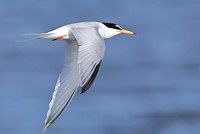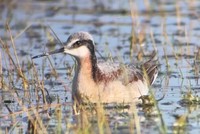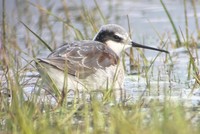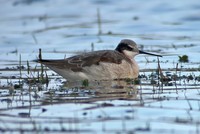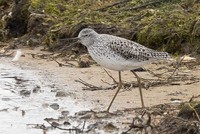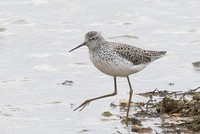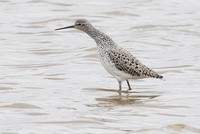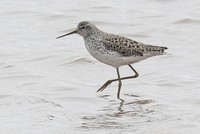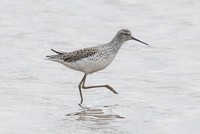A Year of Firsts: 2016 birding review - Part 3: Summer
The first major rarity of the summer was a stunning Great Knot located on 15th June with a large flock of non-breeding Knot in Norfolk at Titchwell and then remaining along the north Norfolk coast between Holme and Scolt Head Island until 4th July and many birders were able to share what is only the fifth British record of this east Asian wader. Chris Booth shared his account of this exciting find.
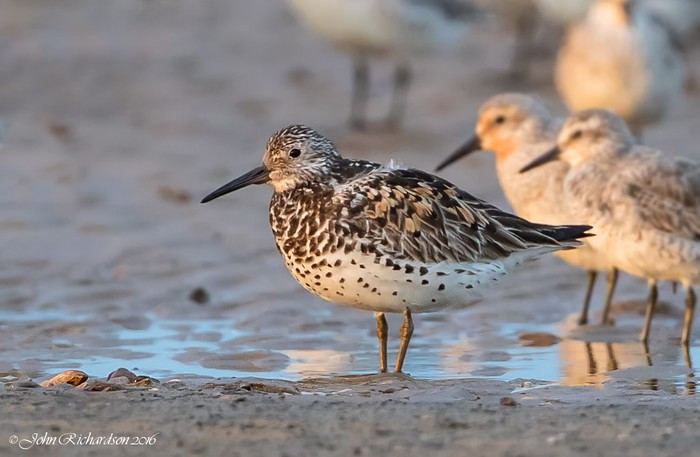
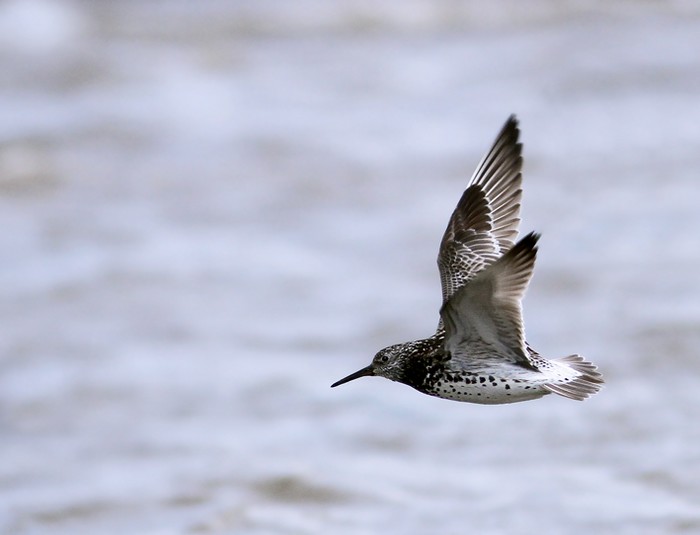
On 11th June 2011 Chris Gibbins found the first American White-winged Scoter for Britain offshore at Murcar, Aberdeenshire, a traditional moulting site for Common and Velvet Scoters a known haunt of Surf Scoters for many years. In 2016 Chris' indefatigability was rewarded by the second British record of American White-winged Scoter at the same location from 25th June until 29th August. Seaducks are long-lived and it is possible that it was the same individual returning.
The only other accepted records of White-winged Scoter in Britain is a bird at Musselburgh Lagoons, Lothian on 26th December 2013 that could not be assigned to subspecies, and a Stejneger's Scoter in Ireland off Rossbeigh Strand, County Kerry between at least 1st February and 11th April 2011.
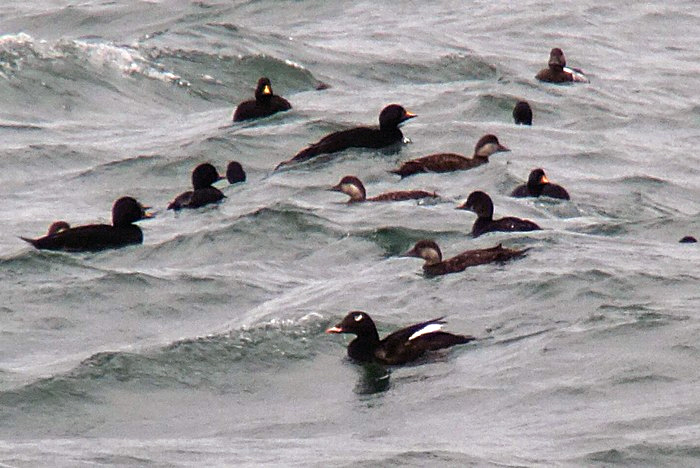
On 2nd July Alan Davies, Ruth Miller and friends watched a Short-toed Eagle over Wykeham Forest, North Yorkshire but - unlike the long-stayer present between Dorset and Norfolk between at least 31st May-20th July 2014 - the bird was never seen again despite searching.
A possible Pratincole watched over-flying the River Caen in Devon on 6th July was presumably the Collared Pratincole subsequently found by Thomas Worthington at Ham Wall, Somerset on 10th-13th July and watched with a backdrop of singing Little Bittern, Glossy Ibises and nesting Great White Egrets creating a truly Mediterranean ambience.
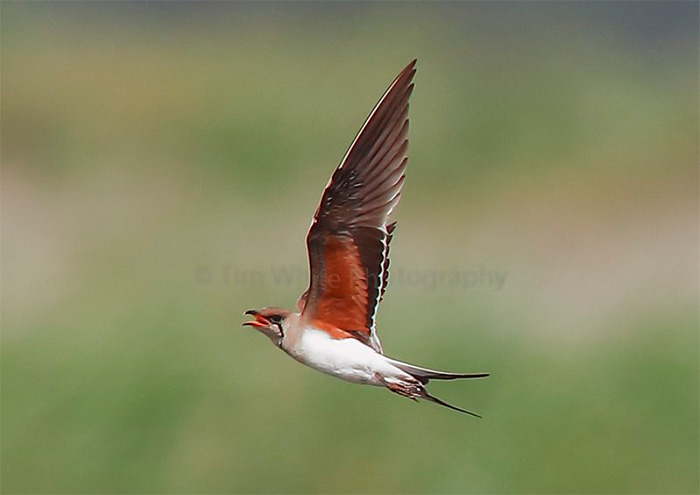
The seventh first of the year arrived on the 20th July when the first Greater Sand Plover for Ireland stayed briefly at Tacumshin, County Wexford on the hottest day of the year.
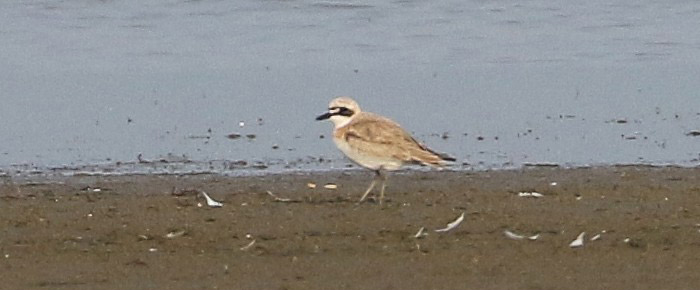
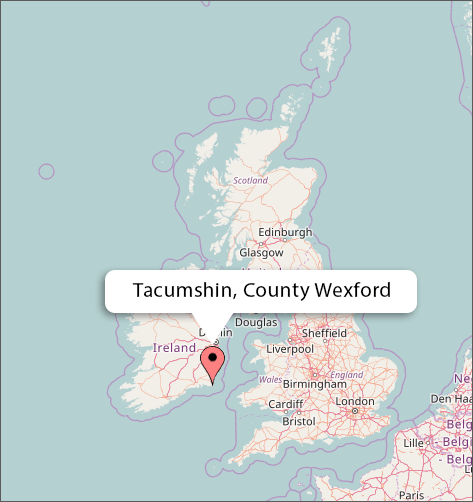
As long ago as 1990 Greater Sand Plover featured in 'Irish Birding News' as being considered the fourth most likely species to be added to the Irish List yet it took a further 26 years and one Lesser Sand Plover before it was found by - following his discovery of the Vega Gull in January - Killian Mullarney, and Killian kindly shared his excitement with us.
After departing Tacumshin what was considered to be the same individual Greater Sand Plover was relocated in northern Spain at 30th July-1st August in Cantabria at Santona, some 620 miles to the south southeast.
It is not the first vagrant wader seen at Tacumshin to be relocated in Iberia with a Pacific Golden Plover present on 1st-3rd August 2005 later being see in Portugal on the Tagus Estuary on 13th-17th August 2005.
In Britain there have been sixteen records of Greater Sand Plover with the majority falling in the summer months.
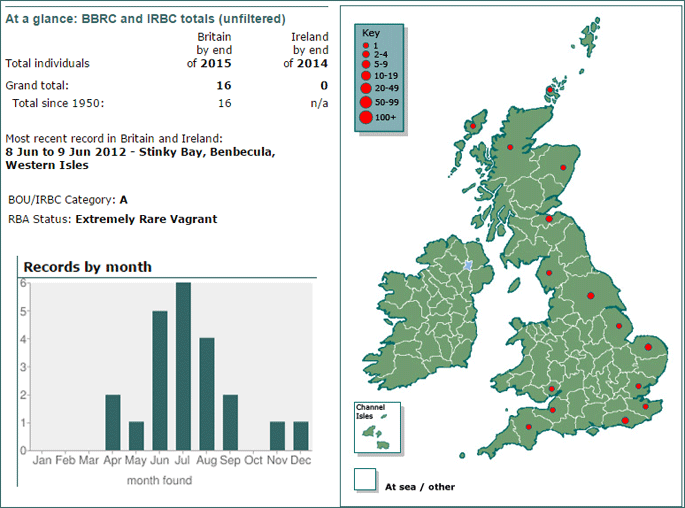
The Greater Sand Plover signalled the beginning of an outstanding purple-patch at Tacumshin with a Pacific Golden Plover found there later on the 20th July and remaining until 22nd July followed by a Western Sandpiper discovered by Paul Kelly on 23rd-26th July.
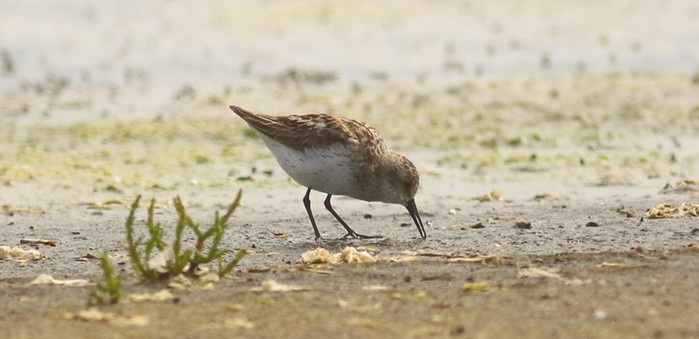
On 26th July at Tacumshin - with the Western Sandpiper and a White-rumped Sandiper still in-situ - Killian Mullarney and Pat Lonergan identified an adult Semipalmated Plover: the second Semipalmated Plover of the year at this site!
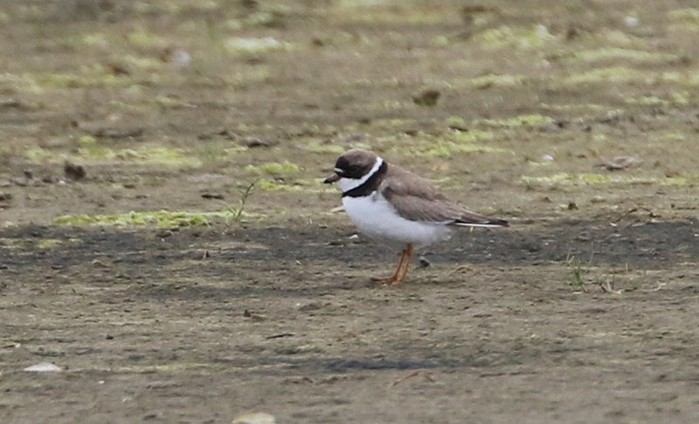
The Tacumshin wader spectacular continued on 13th August when Paul Kelly photographed a Least Sandpiper.
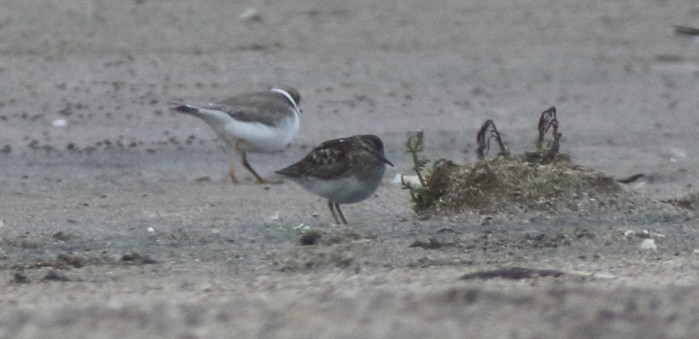
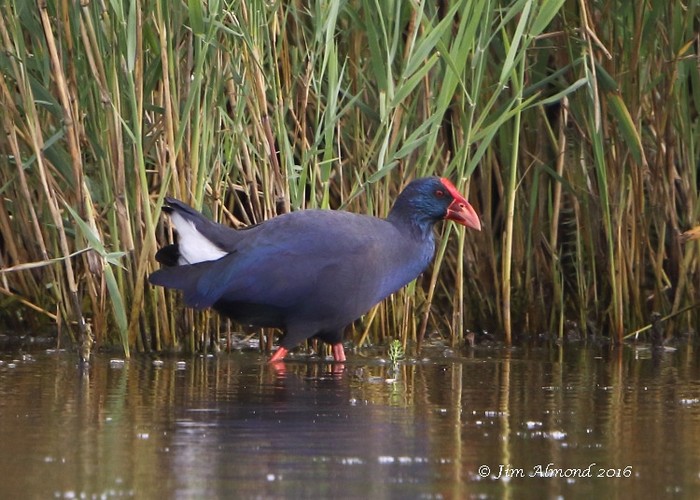
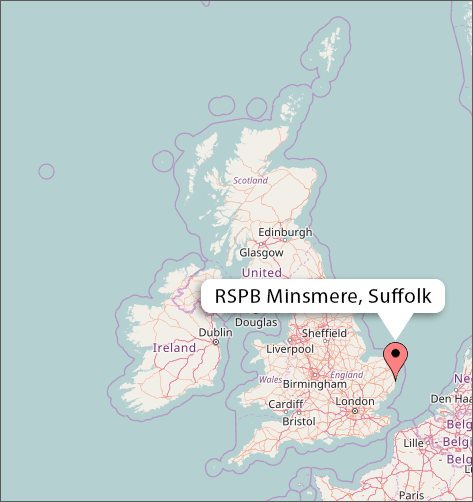
The eighth first of the year was the Western Purple Swamphen found by Frank Clark at Minsmere, Suffolk on 31st July. The initial news of a Purple Swamphen was treated with caution as Grey-headed Swamphen has occurred as an escape in Britain before but as soon as the photographs were circulated it became clear that the specific identity was Western Purple Swamphen.
Precautionary efforts to locate captive Western Purple Swamphens in Britain were unsuccessful and news from France that Western Purple Swamphens were being recorded in numbers further north than ever before pointed to this being a genuine vagrant and it was clear that it should be treated as a new bird for Britain.
The Western Purple Swamphen remained at Minsmere until 5th August but could not be found be found there subsequently. However, on 30th August Peter Clelford relocated the bird 140 miles to the northwest at Alkborough Flats, Lincolnshire where it remained until at least 23rd November and proved very popular.
Purple Swamphen was previously considered one species but is now split into three: Western Purple Swamphen Porphyrio porphyrio, Grey-headed Swamphen Porphyrio madagascariensis and African Swamphen Porphyrio poliocephalus. All three of the Purple Swamphen species have been reported in Britain prior to 2016 with known escaped Grey-headed Swamphens in at least Aberdeenshire, Norfolk, Cambridgeshire and Flintshire, and a probable African Swamphen in Cumbria. A Western Purple Swamphen was reported in Cheshire at Sandbach Flashes on 13th August-26th September 1971 but this record has never been accepted onto the national list.
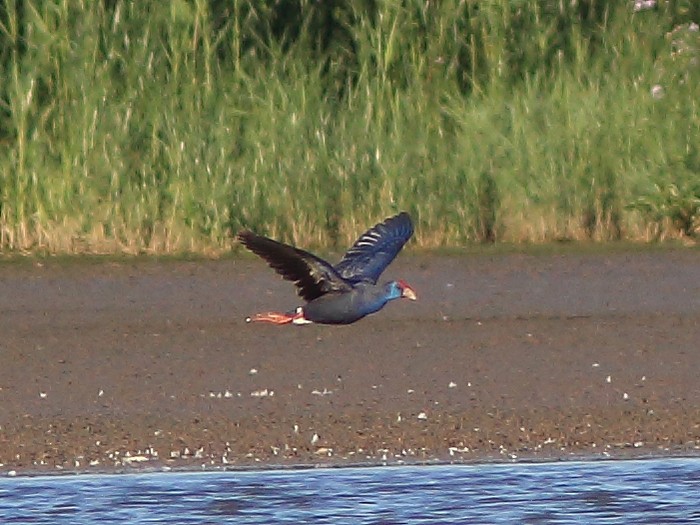
Prior to the bird a Least Sandpiper on 2nd-4th August in Devon at Black Hole Marsh, Seaton found by Tim Wright was notable enough even before it was briefly joined by a second Least Sandpiper on 4th August. Although this multiple occurrence was most unexpected and unprecedented there is was a parallel situation in 1966 when two of the five previous records of Least Sandpiper in Devon were trapped and ringed on Lundy between 8th and 15th September 1966.
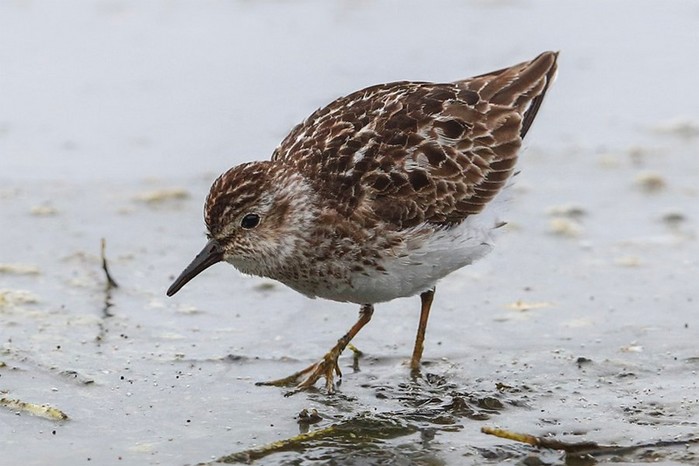
The ninth first of the year was on 13th August when a Brown Booby rested on a fishing boat around seven miles west southwest of Great Skellig, County Kerry. The immature bird was photographed by Tony Browne and Diarmuid Harrington and was present all day and into the night but had departed by dawn on 14th August.
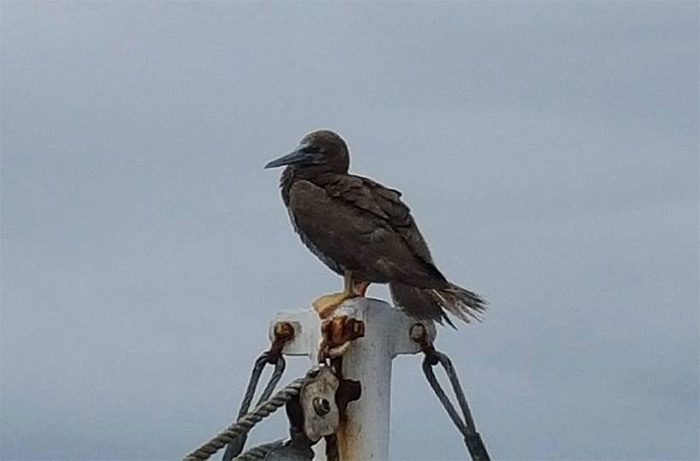
This record followed the discovery of a tideline corpse of a Brown Booby at Owenahincha, County Cork by Ciaran Cronin on 2nd January. Tideline corpses such as this may have drifted a considerable distance before being washed up on land so are not typically included on national lists.
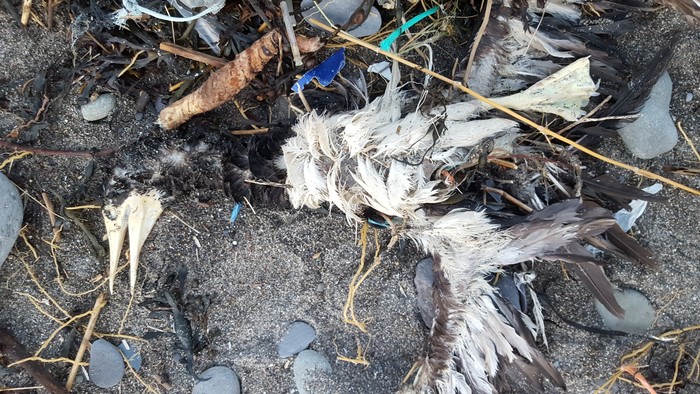
In Iberia in 2016 the third Brown Booby for continental Portugal lingered at Sesimbra, Setubal between at least 23rd July and 25th September and it or another flew past Peniche on 12th November. In Spain the eleventh record was at Malpica, Coruna on 2nd July.
Meanwhile , on the western seaboard of the Atlantic Julian Hough reports that off the mid-Atlantic states of the USA Brown Booby records have dramatically increased over the last five years so hopefully there will be more records in Britain and Ireland in future summers.
On Fair Isle perseverance by the bird observatory ringing team paid off at 02:30 on 14th August when they retrapped a male Swinhoe's Petrel that had previously been mist-netted during routine Storm Petrel monitoring on Fair Isle on 27th July 2013.
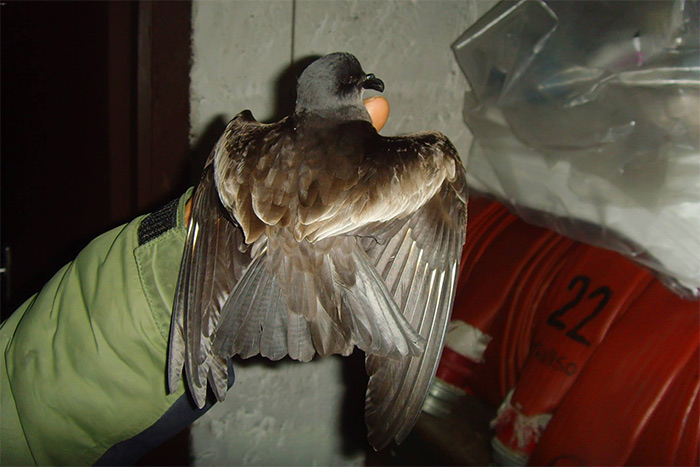
Ringing data from Swinhoe's Petrels that have previously been trapped in Europe shows that it is quite possible that this bird will return to Fair Isle in future summers. The first Swinhoe's Petrel for Britain was trapped in Northumberland at Tynemouth on 23rd July 1989 only with a second individual trapped there three days later on 26th July 1989, but the third British record was trapped at Tynemouth on 6th July 1990 then again in late July each year until 1994 being trapped on seven occasions. The first Swinhoe's Petrel be ringed Europe on Selvagem Grande in the Portuguese Selvagen Islands on 8th July 1983 was retrapped and released in the same place on 21st August 2007 when at least 25 years old.
On the evening of 14th August Tony and Darragh Cully suspected they had found a Least Sandpiper at Cloghaun Lough, Kilbaha, County Clare. The following day John Murphy visited Cloghaun Lough but before he had chance to relocate the stint he found a Solitary Sandpiper - only the seventh Irish record - only for the Least Sandpiper to then join it. The Least Sandpiper remained until 25th August with the Solitary Sandpiper last seen on 20th August.
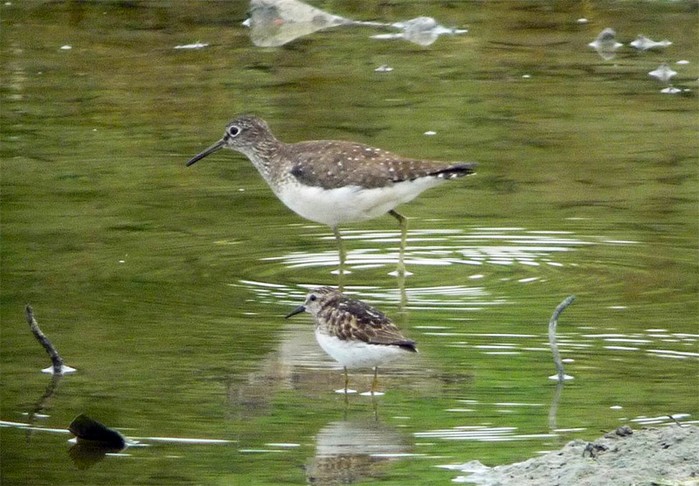
The tenth first came on 16th August Seamus Feeney discovered a large tern at Roonagh Lough, County Mayo and identified the bird as the first county record of Caspian Tern. Galway birder Dermot Breen was the first to twitch the bird and immediately realised it was actually a Royal Tern and only the second Irish record of a live Royal Tern following the first at Clonakilty, County Cork on 7th June 2009. Earlier, on 24th March 1954 a dead Royal Tern was found at North Bull Island, County Dublin
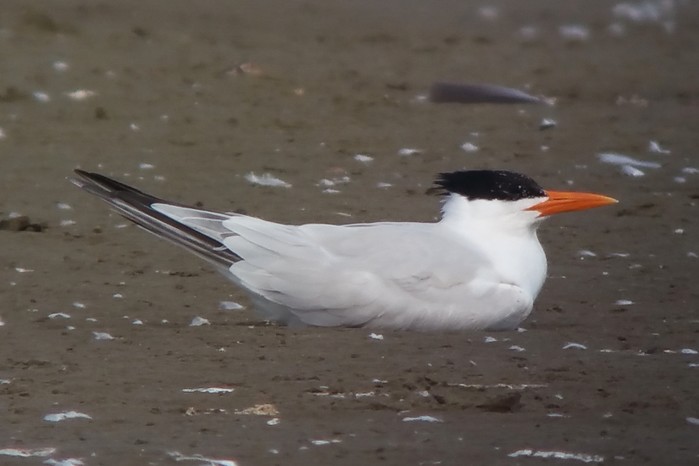
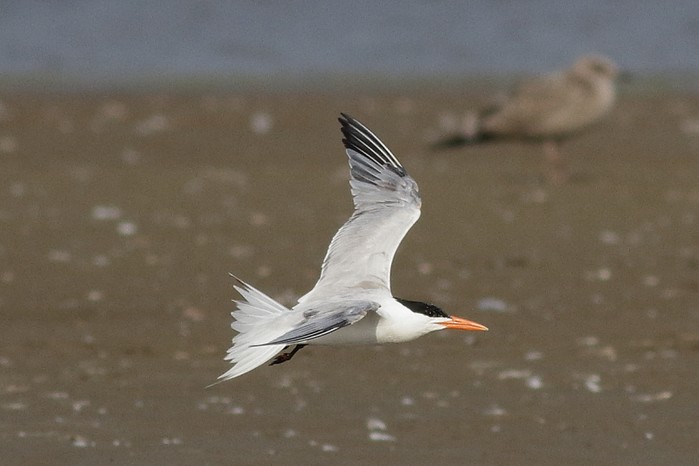
With only five records of Royal Tern from Britain (all currently under review by BBRC) none of which have lingered in one place overnight the Royal Tern in Mayo proved a great attraction but tantalised twitchers by showing again at Roonagh Lough at dawn on 17th August before flying off out to sea and not returning. However, on 23rd August Davey Farrar relocated the Royal Tern at Beale Strand - the same location that Davey had found an Elegant Tern on 13th-24th September 2013 - and here it did linger until 28th August and occasionally crossing the Shannon Estuary to Carrigaholt, County Clare.
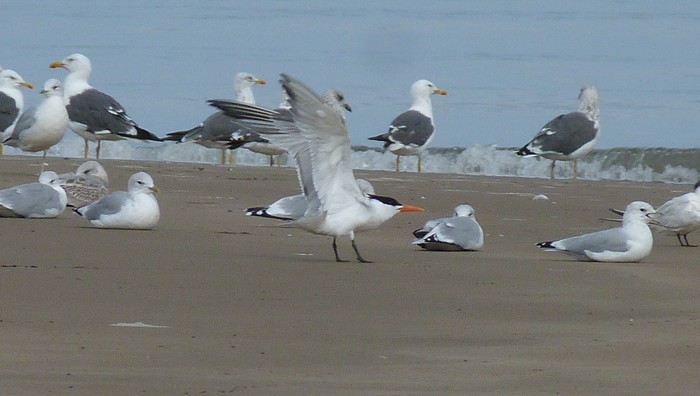
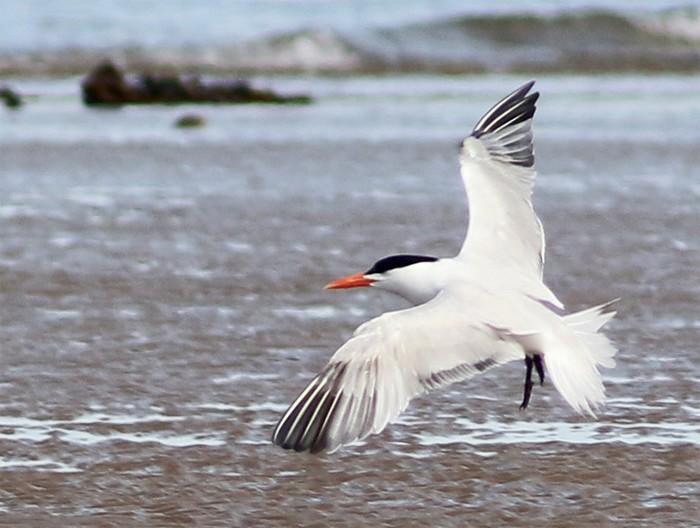
Thought most likely in the field to be an American Royal Tern - the nominate form maxima - but this was not confirmed when Peter Gluth and friends collected a faecal sample from the beach from which Dr Martin Collinson was able to provisionally identify the bird as a African Royal Tern form albididorsalis . Although this is the first confirmed record of African Royal Tern in Britain and Ireland, the Royal Tern in Lothian in 1999 was suspected to be an African, as was the bird in County Cork then Gwynedd and Conwy in June 2009. In addition the first Royal Tern for France on the Atlantic coast at Banc d’ Arguin, Bassin d’Arcachon, Gironde on 9th July 2014 was documented as being African.
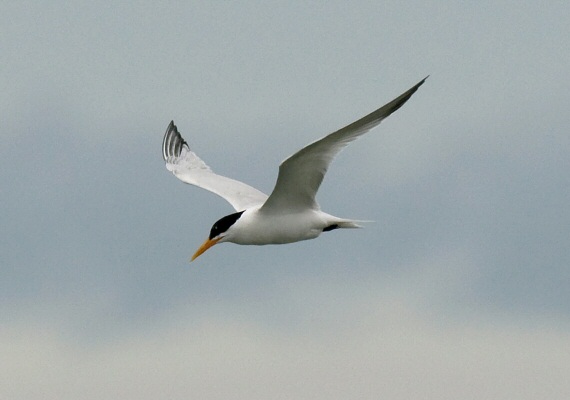
Following a Barolo Shearwater seen by Niall Keogh from a boat 167 miles southwest of St Agnes, Isles of Scilly on 26th July and eleven passes by Fea's/Zino's Petrels between 3rd August and 3rd September the highlight of the late summer seawatching was a Black-browed Albatross watched moving east off Prawle Point, Devon on 19th August by Tony Marchese.
The eleventh first was a Red-footed Booby found apparently exhausted on the beach at St Leonards-on-Sea by Gail Cohen on 4th September 2016, the first record of this tropical seabird for Britain and Ireland. The bird was an adult of the white-tailed brown morph and the significance of this is discussed here.
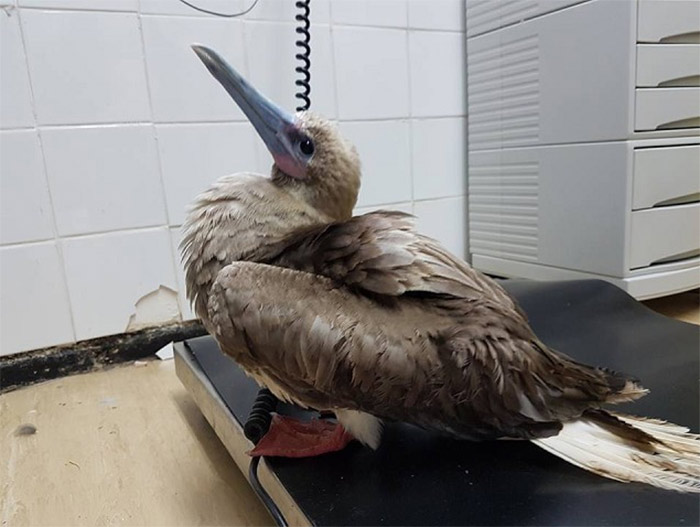
Gail recognised that it was a Red-footed Booby and due to the poor condition of the bird it was immediately taken into care. Initially by the East Sussex Wildlife Rescue Ambulance Service held the bird before it was transferred the following day to RSPCA Mallydams Wood Wildlife Centre. The Red-footed Booby responded well to treatment and was ultimately exported to a potential breeding site for a Red-footed Booby in the Cayman Islands. However, unfortunately the Red-footed Booby died in the Cayman Islands before it was released. Whether the Red-footed Booby would have been better released locally sooner it impossible to know.
Formerly an extreme vagrant to the Western Palearctic the last decade has seen a dramatic upturn in sightings in the region including records in both Spain and even inland in France and a regular presence on Cape Verde including up to eleven birds together in December 2016.
A Year of Firsts: 2016 birding review - Part 2: Spring
1 February 2017
Share this story

